Communicating Health to Young Adults Using Social Media: How, Where, and When?
Abstract
:1. Introduction
2. Materials and Methods
2.1. LEHS Development
- Demographics
- Body image satisfaction (adapted from Mitchison et al. [30])
- Food and food preparation skills (adapted from McGowan et al. [32])
- Meal skipping (adapted from Kutsuma et al. [33])
- Normative beliefs, motivations (adapted from Fishbein and Ajzen [34])
- Attitudes towards food and eating (adapted from Naughton et al. [35]).
- Intention to seek health-related information [36]
- If, where, and how they sought health information from different online sources (adapted from Sensis Social Media Report 2017 [38])
- How they engaged with health information (passive or active) (adapted from Digital Behaviors Segmentation [39])
- Their behavioural intentions towards the health information they retrieved (Adapted from Siuki [40])
2.2. Statisticial Analysis
3. Results
3.1. Demographics
3.2. Health Information Seeking Behaviours and Social Media
4. Discussion
Supplementary Materials
Author Contributions
Funding
Institutional Review Board Statement
Informed Consent Statement
Data Availability Statement
Acknowledgments
Conflicts of Interest
References
- Australian Institute of Health and Welfare. Overweight and Obesity among Australian Children and Adolescents; Australian Institute of Health and Welfare: Canberra, Australia, 2020. [Google Scholar]
- Australian Bureau of Statistics. 4364.0.55.001—Australian Health Survey: First Results, 2011–2012; Australian Bureau of Statistics: Canberra, Australia, 2012. [Google Scholar]
- Munt, A.E.; Partridge, S.R.; Allman-Farinelli, M. The barriers and enablers of healthy eating among young adults: A missing piece of the obesity puzzle: A scoping review: Barriers and enablers of healthy eating. Obes. Rev. 2017, 18, 1–17. [Google Scholar] [CrossRef] [PubMed]
- Fergie, G.; Hunt, K.; Hilton, S. Social media as a space for support: Young adults’ perspectives on producing and consuming user-generated content about diabetes and mental health. Soc. Sci. Med. 2016, 170, 46–54. [Google Scholar] [CrossRef] [PubMed] [Green Version]
- Levac, J.J.; O’Sullivan, T. Social media and its use in health promotion. Interdiscip. J. Health Sci. 2010, 1, 47–53. [Google Scholar] [CrossRef]
- Dooley, J.A.; Jones, S.C.; Iverson, D. Social marketing and health promotion communication: From traditional marketing to Web 2.0. Cases Public Health Commun. Mark. 2013, 7, 120–139. [Google Scholar]
- Chou, W.-Y.S.; Oh, A.; Klein, W.M.P. Addressing Health-Related Misinformation on Social Media. JAMA 2018, 320, 2417–2418. [Google Scholar] [CrossRef]
- Parker, L.; Brennan, L. Social Marketing and Advertising in the Age of Social Media; Edward Elgar Publishing, Inc.: Northampton, MA, USA, 2020. [Google Scholar]
- Barklamb, A.M.; Molenaar, A.; Brennan, L.; Evans, S.; Choong, J.; Herron, E.; Reid, M.; McCaffrey, T.A. Learning the language of social media: A comparison of engagement metrics and social media strategies used by food and nutrition-related social media accounts. Nutrients 2020, 12, 2839. [Google Scholar] [CrossRef]
- Dietrich, T.; Rundle-Thiele, S.; Kubacki, K. Segmentation in Social Marketing Process, Methods and Application, 1st ed.; Springer: Singapore, 2017. [Google Scholar]
- Brennan, L.L.; Binney, W.; Parker, L.; Aleti, T.; Nguyen, A.M. Social Marketing and Behaviour Change: Models, Theory and Applications; Edward Elgar: Cheltenham, UK; Northampton, MA, USA, 2014. [Google Scholar]
- Brennan, L.; Chin, S.; Molenaar, A.; Barklamb, A.M.; Lim, M.S.C.; Reid, M.; Truby, H.; Jenkins, E.L.; McCaffrey, T.A. Beyond body weight: Design and validation of psycho-behavioural living and eating for health segments (LEHS) profiles for social marketing. Nutrients 2020, 12, 2882. [Google Scholar] [CrossRef]
- Dix, C.F.; Brennan, L.; Reid, M.; McCaffrey, T.A.; Molenaar, A.; Barklamb, A.; Chin, S.; Truby, H. Nutrition meets social marketing: Targeting health promotion campaigns to young adults using the living and eating for health segments. Nutrients 2021, 13, 3151. [Google Scholar] [CrossRef]
- Lombard, C.; Brennan, L.; Reid, M.; Klassen, K.M.; Palermo, C.; Walker, T.; Lim, M.S.C.; Dean, M.; McCaffrey, T.A.; Truby, H. Communicating health-Optimising young adults’ engagement with health messages using social media: Study protocol: Communicating health study protocol. Nutr. Diet. 2018, 75, 509–519. [Google Scholar] [CrossRef]
- Creswell, J.W. Research Design: Qualitative, Quantitative, and Mixed Methods Approaches, 2nd ed.; Sage Publications: Thousand Oaks, CA, USA, 2003. [Google Scholar]
- Fishbein, M.; Yzer, M.C. Using Theory to Design Effective Health Behavior Interventions. Commun. Theory 2003, 13, 164–183. [Google Scholar] [CrossRef]
- Klassen, K.M.; Douglass, C.H.; Brennan, L.; Truby, H.; Lim, M.S.C. Social media use for nutrition outcomes in young adults: A mixed-methods systematic review. Int. J. Behav. Nutr. Phys. Act. 2018, 15, 70. [Google Scholar] [CrossRef] [PubMed] [Green Version]
- Rounsefell, K.; Gibson, S.; McLean, S.; Blair, M.; Molenaar, A.; Brennan, L.; Truby, H.; McCaffrey, T.A. Social media, body image and food choices in healthy young adults: A mixed methods systematic review. Nutr. Diet. 2020, 77, 19–40. [Google Scholar] [CrossRef] [PubMed]
- Walker, T.; Palermo, C.; Klassen, K. Considering the impact of social media on contemporary improvement of Australian Aboriginal health: Scoping review. JMIR Public Health Surveill. 2019, 5, 64–71. [Google Scholar] [CrossRef]
- Brennan, L.; Klassen, K.; Weng, E.; Chin, S.; Molenaar, A.; Reid, M.; Truby, H.; McCaffrey, T.A. A social marketing perspective of young adults’ concepts of eating for health: Is it a question of morality? Int. J. Behav. Nutr. Phys. Act. 2020, 17, 44. [Google Scholar] [CrossRef] [PubMed] [Green Version]
- Molenaar, A.; Choi, T.S.T.; Brennan, L.; Reid, M.; Lim, M.S.C.; Truby, H.; McCaffrey, T.A. Language of health of young australian adults: A qualitative exploration of perceptions of health, wellbeing and health promotion via online conversations. Nutrients 2020, 12, 887. [Google Scholar] [CrossRef] [Green Version]
- Molenaar, A.; Saw, W.Y.; Brennan, L.; Reid, M.; Lim, M.S.C.; McCaffrey, T.A. Effects of advertising: A qualitative analysis of young adults’ engagement with social media about food. Nutrients 2021, 13, 1934. [Google Scholar] [CrossRef]
- Lim, M.S.C.; Molenaar, A.; Brennan, L.; Reid, M.; McCaffrey, T. Young Adults’ Use of Different Social Media Platforms for Health Information: Insights from Web-Based Conversations. J. Med. Internet Res. 2022, 24, e23656. [Google Scholar] [CrossRef]
- Australian Bureau of Statistics. Census of Population and Housing: Nature and Content, Australia. 2016. Available online: https://www.abs.gov.au/websitedbs/censushome.nsf/home/2016 (accessed on 18 January 2022).
- McCaffrey, T.; Brennan, L.; Reid, M.; Molenaar, A.; Chin, S. Survey—Living and Eating for Health Segments (LEHS) and Social Media Use: Implications for Improving Healthy Eating Practices; Monash University: Melbourne, Australia, 2020. [Google Scholar] [CrossRef]
- Allison, D.B.; Basile, V.C.; Yuker, H.E. The measurement of attitudes toward and beliefs about obese persons. Int. J. Eat. Disord. 1991, 10, 599–607. [Google Scholar] [CrossRef]
- Ata, R.N.; Thompson, J.K.; Boepple, L.; Marek, R.J.; Heinberg, L.J. Obesity as a Disease: Effects on Weight-Biased Attitudes and Beliefs. Stigma Health 2018, 3, 406–416. [Google Scholar] [CrossRef] [Green Version]
- Rocha, N.S.d.; Power, M.J.; Bushnell, D.M.; Fleck, M.P. The EUROHIS-QOL 8-Item Index: Comparative Psychometric Properties to Its Parent WHOQOL-BREF. Value Health 2012, 15, 449–457. [Google Scholar] [CrossRef] [Green Version]
- Meiselman, H.L. Quality of life, well-being and wellness: Measuring subjective health for foods and other products. Food Qual. Prefer. 2016, 54, 101–109. [Google Scholar] [CrossRef]
- Mitchison, D.; Hay, P.; Griffiths, S.; Murray, S.B.; Bentley, C.; Gratwick-Sarll, K.; Harrison, C.; Mond, J. Disentangling body image: The relative associations of overvaluation, dissatisfaction, and preoccupation with psychological distress and eating disorder behaviors in male and female adolescents: Disentangling Body Image Disturbance. Int. J. Eat. Disord. 2017, 50, 118–126. [Google Scholar] [CrossRef] [PubMed]
- Flynn, L.R.; Goldsmith, R.E. A Short, Reliable Measure of Subjective Knowledge. J. Bus. Res. 1999, 46, 57–66. [Google Scholar] [CrossRef]
- McGowan, L.; Pot, G.K.; Stephen, A.M.; Lavelle, F.; Spence, M.; Raats, M.; Hollywood, L.; McDowell, D.; McCloat, A.; Mooney, E.; et al. The influence of socio-demographic, psychological and knowledge-related variables alongside perceived cooking and food skills abilities in the prediction of diet quality in adults: A nationally representative cross-sectional study. Int. J. Behav. Nutr. Phys. Act. 2016, 13, 111. [Google Scholar] [CrossRef] [PubMed] [Green Version]
- Kutsuma, A.; Nakajima, K.; Suwa, K. Potential Association between Breakfast Skipping and Concomitant Late-Night-Dinner Eating with Metabolic Syndrome and Proteinuria in the Japanese Population. Scientifica 2014, 2014, 253581–253589. [Google Scholar] [CrossRef] [PubMed]
- Fishbein, M.; Ajzen, I. Belief, Attitude, Intention, and Behavior: An Introduction to Theory and Research; Addison-Wesley: Reading, MA, USA, 1975. [Google Scholar]
- Naughton, P.; McCarthy, S.N.; McCarthy, M.B. The creation of a healthy eating motivation score and its association with food choice and physical activity in a cross sectional sample of Irish adults. Int. J. Behav. Nutr. Phys. Act. 2015, 12, 74. [Google Scholar] [CrossRef] [Green Version]
- Kelly, L.; Ziebland, S.; Jenkinson, C. Measuring the effects of online health information: Scale validation for the e-Health Impact Questionnaire. Patient Educ. Couns. 2015, 98, 1418–1424. [Google Scholar] [CrossRef] [Green Version]
- Dodd, T.H.; Laverie, D.A.; Wilcox, J.F.; Duhan, D.F. Differential Effects of Experience, Subjective Knowledge, and Objective Knowledge on Sources of Information used in Consumer Wine Purchasing. J. Hosp. Tour. Res. 2005, 29, 3–19. [Google Scholar] [CrossRef]
- Sensis Pty Ltd. Sensis Social Media Report 2017; Sensis Pty Ltd: Melbourne, Australia, 2017. [Google Scholar]
- Global Web Index. Digital Behaviours Segmentation; Global Web Index: London, UK, 2018. [Google Scholar]
- Siuki, H. Stimulating Online Consumer Engagement for Social Marketing Messages within Social Media Networks. Ph.D. Thesis, Macquarie University, Macquarie Park, Australia, 2017. [Google Scholar]
- Carins, J.E.; Rundle-Thiele, S.R. Eating for the better: A social marketing review (2000–2012). Public Health Nutr. 2014, 17, 1628–1639. [Google Scholar] [CrossRef] [Green Version]
- Hardcastle, S.J.; Hagger, M.S. Psychographic profiling for effective health behavior change interventions. Front. Psychol. 2016, 6, 1988. [Google Scholar] [CrossRef] [Green Version]
- Chon, M.-G.; Park, H. One does not fit all: Health audience segmentation and prediction of health behaviors in cancer prevention. Health Mark. Q. 2017, 34, 202–216. [Google Scholar] [CrossRef] [PubMed]
- Jenkins, E.L.; Legrand, S.; Brennan, L.; Molenaar, A.; Reid, M.; McCaffrey, T.A. Psycho-behavioural segmentation in food and nutrition: A systematic scoping review of the literature. Nutrients 2021, 13, 1795. [Google Scholar] [CrossRef] [PubMed]
- Hardcastle, S.J.; Hancox, J.; Hattar, A.; Maxwell-Smith, C.; Thøgersen-Ntoumani, C.; Hagger, M.S. Motivating the unmotivated: How can health behavior be changed in those unwilling to change? Front. Psychol. 2015, 6, 835. [Google Scholar] [CrossRef] [Green Version]
- Linda, B.; Molenaar, A.; Sherman, A.; Chin, S.; Reid, M.; Truby, H.; McCaffrey, T. It Takes a Village: Co-creation and Co-design for Social Media Health Promotion. In Broadening Cultural Horizons in Social Marketing: Comparing Case Studies from Asia-Pacific; Hay, R., Eagle, L., Bhati, A., Eds.; Springer: Singapore, 2021; pp. 67–93. [Google Scholar]
- Rogers, A.; Wilkinson, S.; Truby, H.; Downie, O. Communication of Nutrition Information by Influencers on Social Media: A Scoping Review. Health Promot. J. Aust. 2021. [Google Scholar] [CrossRef] [PubMed]
- Jenkins, E.L.; Ilicic, J.; Molenaar, A.; Chin, S.; McCaffrey, T.A. Strategies to Improve Health Communication: Can Health Professionals Be Heroes? Nutrients 2020, 12, 1861. [Google Scholar] [CrossRef]

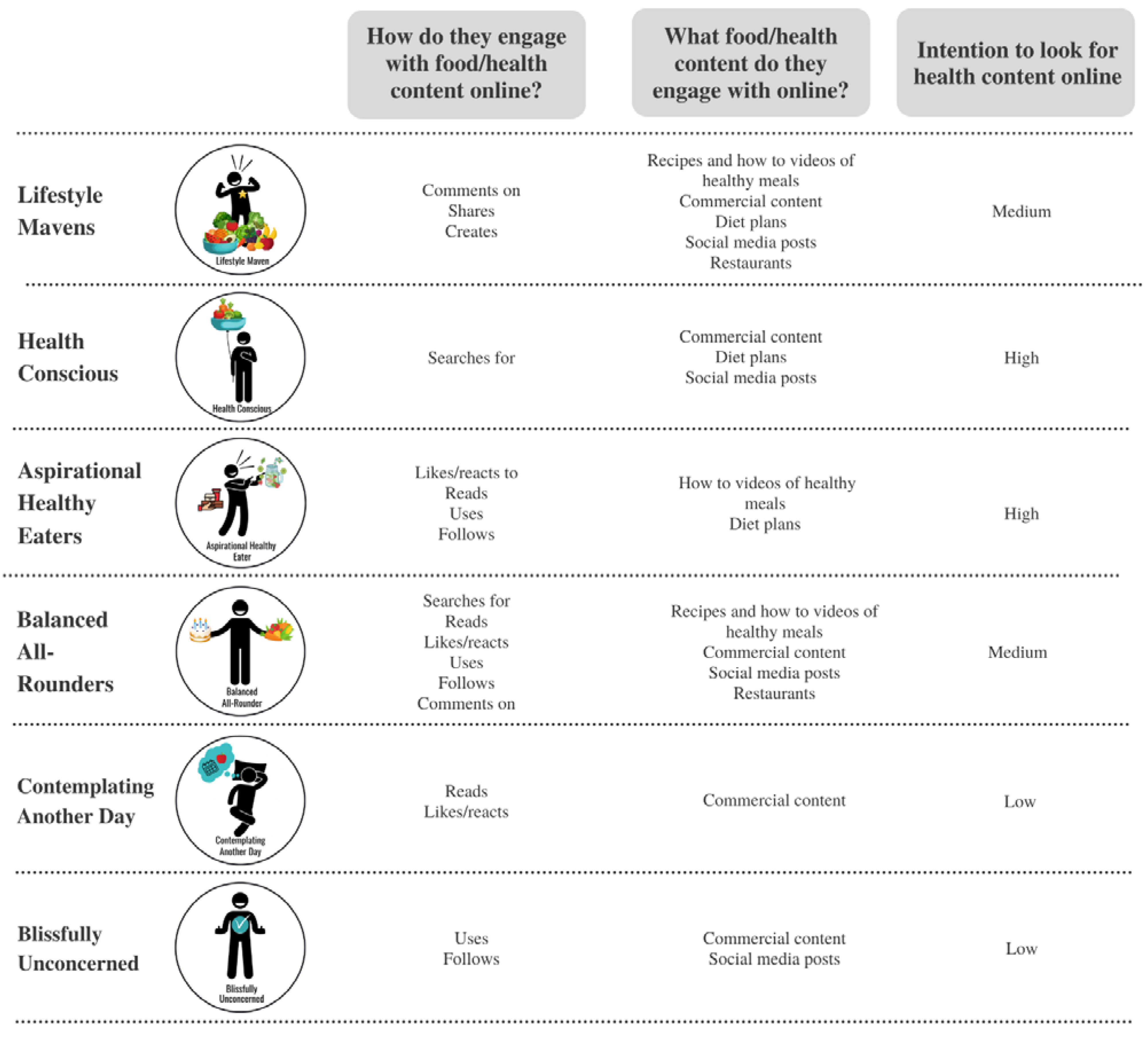
| Lifestyle Mavens | 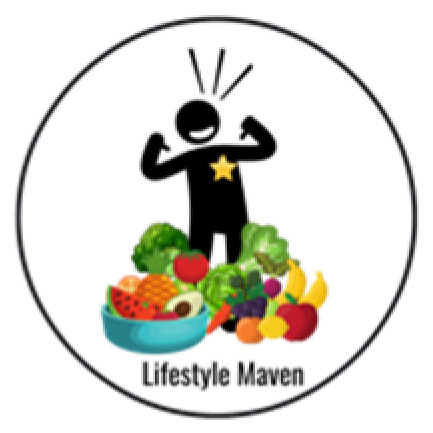 | I am passionate about healthy eating and health plays a big part in my life. I use social media to follow active lifestyle personalities or get new recipes/exercise ideas. I may even buy superfoods or follow a particular type of diet. I like to think I am super healthy. |
| Health Conscious | 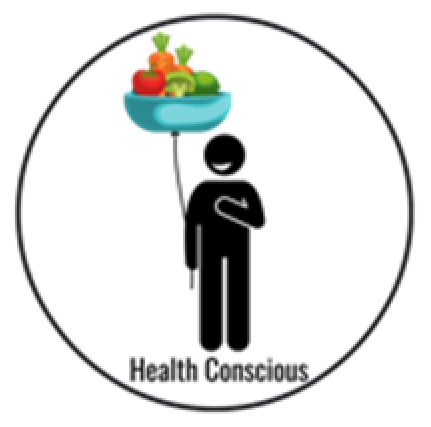 | I am health-conscious and being healthy and eating healthy is important to me. Although health means different things to different people, I make conscious lifestyle decisions about eating based on what I believe healthy means. I look for new recipes and healthy eating information on social media. |
| Aspirational Healthy Eaters |  | I aspire to be healthy (but struggle sometimes). Healthy eating is hard work! I have tried to improve my diet, but always find things that make it difficult to stick with the changes. Sometimes I notice recipe ideas or healthy eating hacks, and if it seems easy enough, I will give it a go. |
| Balanced All Rounders | 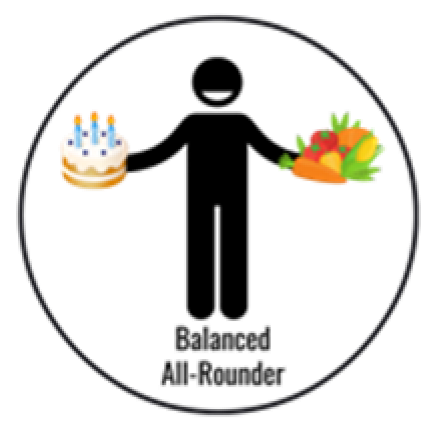 | I try and live a balanced lifestyle, and I think that all foods are okay in moderation. I should not have to feel guilty about eating a piece of cake now and again. I get all sorts of inspiration from social media like finding out about new restaurants, fun recipes, and sometimes healthy eating tips. |
| Contemplating Another Day |  | I am contemplating healthy eating, but it is not a priority for me right now. I know the basics about what it means to be healthy, but it does not seem relevant to me right now. I have taken a few steps to be healthier, but I am not motivated to make it a high priority because I have too many other things going on in my life. |
| Blissfully Unconcerned | 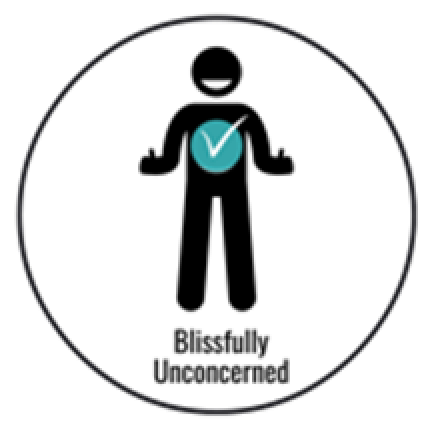 | I am not bothered about healthy eating. I do not really see the point and I do not think about it. I do not really notice healthy eating tips or recipes and I do not care what I eat. |
| Characteristic | Category | Lifestyle Mavens n = 311 | Health Conscious n = 425 | Aspirational Healthy Eaters n = 556 | Balanced All-Rounders n = 432 | Contemplating Another Day n = 226 | Blissfully Unconcerned n = 69 |
|---|---|---|---|---|---|---|---|
| Seeking Online Health Resources | WHO, WebMD, Mayo, Government, State Gov health websites | 10.9 (3.87) a | 10.1 (4.01) a | 8.6 (4.08) b | 8.3 (3.90) b | 7.8 (3.83) b | 8.2 (3.85) b |
| Health and wellness blogs, Health and medical forums, reviews of medical health products, ads of medical health products | 11.9 (4.18) a | 10.3 (4.32) b | 8.5 (4.06) c | 7.7 (3.79) c,d | 7.4 (4.09) d | 8.5 (4.34) c,d | |
| Friends and family posts, other people with similar health concerns on social media, YouTube wellness channels | 9.1 (2.86) a | 8.3 (3.15) b | 7.5 (3.17) c | 7.1 (3.23) c,d | 6.7 (3.33) d | 7.1 (3.16) c,d | |
| Intention to search online for food/health information | 9.9 (2.43) a,b | 10.1 (2.67) a | 10.1 (2.65) a | 9.5 (2.92) b | 8.1 (3.18) c | 8.0 (3.2) c |
| Action | Content | Lifestyle Mavens n = 311 | Health Conscious n = 425 | Aspirational Healthy Eaters n = 556 | Balanced All-rounders n = 432 | Contemplating Another Day n = 226 | Blissfully Unconcerned n = 69 |
|---|---|---|---|---|---|---|---|
| Search for | recipes of healthy food | 12.8% | 19.7% | 30.2% | 25.9% | 9.9% | 1.4% |
| how to videos for healthy meals | 10.4% | 22.9% | 30.1% | 25.7% | 9.6% | 1.3% | |
| commercial content | 13.9% | 24.5% | 25.2% | 22.3% | 11.0% | 3.2% | |
| diet plans | 12.1% | 25.3% | 30.2% | 24.0% | 7.2% | 1.1% | |
| posts from family and friends about food/health | 14.9% | 24.0% | 27.4% | 21.9% | 10.3% | 1.5% | |
| restaurants | 9.1% | 21.2% | 27.2% | 28.8% | 12.5% | 1.2% | |
| Read | recipes of healthy food | 11.3% | 20.5% | 29.1% | 26.1% | 10.9% | 2.1% |
| how to videos for healthy meals | 11.3% | 22.4% | 28.6% | 27.1% | 8.9% | 1.7% | |
| commercial content | 11.4% | 20.0% | 27.8% | 25.3% | 13.5% | 1.9% | |
| diet plans | 10.9% | 23.2% | 32.8% | 22.1% | 9.7% | 1.3% | |
| posts from family and friends about food/health | 9.2% | 22.1% | 30.6% | 24.7% | 11.8% | 1.6% | |
| restaurants | 10.3% | 19.6% | 29.2% | 27.2% | 12.0% | 1.8% | |
| Like/react to | recipes of healthy food | 13.8% | 19.5% | 29.6% | 23.5% | 11.5% | 2.1% |
| how to videos for healthy meals | 11.8% | 20.6% | 31.2% | 24.0% | 11.0% | 1.4% | |
| commercial content | 17.8% | 20.4% | 24.3% | 21.4% | 13.2% | 3.0% | |
| diet plans | 17.8% | 22.3% | 34.1% | 18.6% | 6.1% | 1.1% | |
| posts from family and friends about food/health | 11.3% | 19.0% | 30.3% | 25.9% | 12.0% | 1.5% | |
| restaurants | 14.4% | 22.9% | 24.6% | 24.1% | 11.9% | 2.0% | |
| Comment on | recipes of healthy food | 28.4% | 24.8% | 22.0% | 14.2% | 7.1% | 3.5% |
| how to videos for healthy meals | 26.2% | 29.0% | 24.8% | 11.7% | 5.6% | 2.8% | |
| commercial content | 31.1% | 23.2% | 23.2% | 13.0% | 7.3% | 2.3% | |
| diet plans | 28.2% | 27.6% | 23.8% | 10.5% | 8.3% | 1.7% | |
| posts from family and friends about food/health | 15.0% | 18.5% | 29.7% | 23.9% | 11.0% | 1.9% | |
| restaurants | 23.7% | 25.3% | 24.1% | 15.6% | 10.5% | 0.8% | |
| Share privately | recipes of healthy food | 17.0% | 22.9% | 28.4% | 19.0% | 9.8% | 2.9% |
| how to videos for healthy meals | 23.6% | 21.2% | 23.6% | 20.4% | 8.4% | 2.8% | |
| commercial content | 27.9% | 23.9% | 22.1% | 13.7% | 9.3% | 3.1% | |
| diet plans | 34.2% | 17.8% | 22.8% | 14.6% | 7.3% | 3.2% | |
| posts from family and friends about food/health | 23.4% | 21.6% | 25.5% | 16.5% | 9.4% | 3.6% | |
| restaurants | 21.9% | 20.1% | 24.2% | 20.8% | 10.0% | 3.0% | |
| Share publicly | recipes of healthy food | 24.3% | 26.3% | 24.7% | 18.1% | 6.2% | 0.4% |
| how to videos for healthy meals | 26.9% | 20.8% | 27.4% | 15.6% | 6.6% | 2.8% | |
| commercial content | 35.2% | 21.4% | 24.0% | 9.7% | 5.1% | 4.6% | |
| diet plans | 31.9% | 25.8% | 22.5% | 12.1% | 3.3% | 4.4% | |
| posts from family and friends about food/health | 30.0% | 23.6% | 24.1% | 13.2% | 7.3% | 1.8% | |
| restaurants | 26.3% | 21.1% | 23.7% | 15.5% | 10.3% | 3.1% | |
| Create | recipes of healthy food | 31.1% | 28.0% | 20.1% | 13.4% | 5.5% | 1.8% |
| how to videos for healthy meals | 33.1% | 26.2% | 20.0% | 9.2% | 8.5% | 3.1% | |
| commercial content | 36.8% | 23.2% | 18.1% | 10.3% | 9.0% | 2.6% | |
| diet plans | 36.2% | 24.8% | 17.0% | 9.9% | 9.2% | 2.8% | |
| posts from family and friends about food/health | 31.9% | 23.3% | 20.9% | 10.4% | 8.0% | 5.5% | |
| restaurants | 31.6% | 23.5% | 23.5% | 11.8% | 5.1% | 4.4% | |
| Use/ Follow | recipes of healthy food | 10.0% | 21.3% | 30.9% | 26.2% | 10.5% | 1.2% |
| how to videos for healthy meals | 11.2% | 22.7% | 27.6% | 25.6% | 11.2% | 1.7% | |
| commercial content | 16.1% | 22.7% | 29.9% | 19.4% | 6.6% | 5.2% | |
| diet plans | 14.2% | 24.0% | 34.2% | 18.2% | 7.4% | 2.2% | |
| posts from family and friends about food/health | 17.4% | 21.8% | 25.9% | 21.8% | 10.9% | 2.0% | |
| restaurants | 14.7% | 18.7% | 27.1% | 25.8% | 13.0% | 0.7% |
Publisher’s Note: MDPI stays neutral with regard to jurisdictional claims in published maps and institutional affiliations. |
© 2022 by the authors. Licensee MDPI, Basel, Switzerland. This article is an open access article distributed under the terms and conditions of the Creative Commons Attribution (CC BY) license (https://creativecommons.org/licenses/by/4.0/).
Share and Cite
Dix, C.F.; Brennan, L.; McCaffrey, T.A.; Reid, M.; Molenaar, A.; Barklamb, A.; Chin, S.; Truby, H. Communicating Health to Young Adults Using Social Media: How, Where, and When? Nutrients 2022, 14, 2967. https://doi.org/10.3390/nu14142967
Dix CF, Brennan L, McCaffrey TA, Reid M, Molenaar A, Barklamb A, Chin S, Truby H. Communicating Health to Young Adults Using Social Media: How, Where, and When? Nutrients. 2022; 14(14):2967. https://doi.org/10.3390/nu14142967
Chicago/Turabian StyleDix, Clare F., Linda Brennan, Tracy A. McCaffrey, Mike Reid, Annika Molenaar, Amy Barklamb, Shinyi Chin, and Helen Truby. 2022. "Communicating Health to Young Adults Using Social Media: How, Where, and When?" Nutrients 14, no. 14: 2967. https://doi.org/10.3390/nu14142967
APA StyleDix, C. F., Brennan, L., McCaffrey, T. A., Reid, M., Molenaar, A., Barklamb, A., Chin, S., & Truby, H. (2022). Communicating Health to Young Adults Using Social Media: How, Where, and When? Nutrients, 14(14), 2967. https://doi.org/10.3390/nu14142967






